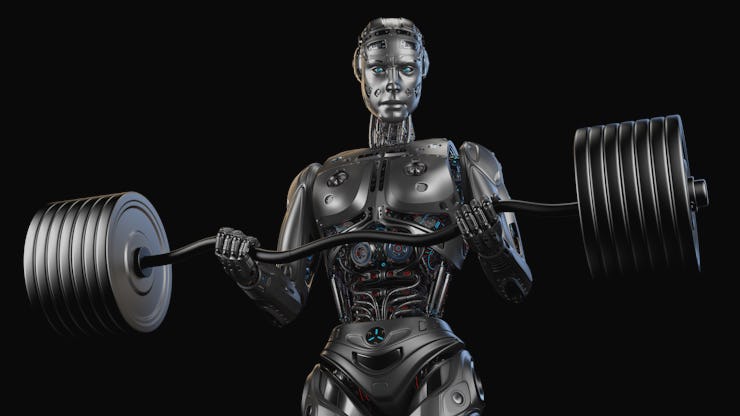3D-printed muscles could be coming to a hospital near you
But not just to get jacked.

Muscle damage, like tearing your ACL, can be traumatic and lead to economic as well as functional decline in patients suffering from it. While scientists have designed 3D printed approaches to help strengthen these muscular losses, recent models have been too slow, bulky and non-adaptive to provide patients a true solution. But a new study hopes to change this by creating a hand-held, 3D printing pen that can print bioink directly on patients' wounds and adhere to each wound's unique shape.
The study, published last month in American Chemical Society journal, focuses on a specific kind of muscle loss following a traumatic injury called volumetric muscle loss (VML.) Skeletal muscle is typically resilient and able to repair itself easily, but substantial damage to tissue from VML can make this impossible and in turn, can cause a loss of function in the affected area if not treated quickly. In order to test how a more agile 3D printing tool might benefit patients suffering from VML, researchers designed a semi-automated, hand-held 3D bioprinting pen to test on mice.
The study's lead researcher and associate professor at the University of Connecticut's School of Dental Medicine biomedical engineering department, Ali Tamayol, said in a statement that this technology could help fill a gap in care for these patients.
"[A] good solution currently does not exist for patients who suffer volumetric muscle loss. A customizable, printed gel establishes the foundation for a new treatment paradigm can improve the care of our trauma patients."
Physicians are able redraw muscle-like connections on these VML wounds, almost like icing a cake.
This muscle-printing pen prints a material called gelatin methacryloyl (GelMA), a collagen-like biomaterial designed to mimic skeletal tissue and act as a bioadhesive. In mice, which had been treated such that they developed VML, researchers tested different size needle tips to exactly extrude the collagen-like material on the wound's surface in a form called a scaffold. Then, using a UV light attached to the pen, the researchers were able to meld the different strips of materials together, kind of like soldering. The team found that mice treated with this 3D bioink pen demonstrated a significant increase in muscle size by the end of the trial.
The authors also write that after 28-days of implantation they did not observe any inflammation or damage to the surrounding tissue where the bioink scaffolding had adhered and found through testing that the scaffold demonstrated similar tear and shear strength to natural muscles.
Tamayol that this kind of quick, individualized approach to printing these 3D scaffolds could totally change how this kind of injury is approached.
"This is a new generation of 3D printers than enables clinicians to directly print the scaffold within the patient's body," said Tamayol. "Best of all, this system does not require the presence of sophisticated imaging and printing systems."
While this study was only done in mice and can not be directly extrapolated to human subjects, the authors have filed a patent for this technology and can hopefully move forward with developing human trials in the future.
Abstract: Reconstructive surgery remains inadequate for the treatment of volumetric muscle loss (VML). The geometry of skeletal muscle defects in VML varies on a case-by-case basis. Threedimensional (3D) printing has emerged as one strategy that enables the fabrication of scaffolds that match the geometry of the defect site. However, the time and facilities needed for imaging the defect site, processing to render computer models, and printing a suitable scaffold prevent immediate reconstructive interventions post-traumatic injuries. In addition, the proper implantation of hydrogel-based scaffolds, which have generated promising results in vitro, is a major challenge. To overcome these challenges, a paradigm is proposed in which gelatin-based hydrogels are printed directly into the defect area and crosslinked in situ. The adhesiveness of the bioink hydrogel to the skeletal muscles was assessed ex vivo. The suitability of the in situ printed bioink for the delivery of cells is successfully assessed in vitro. Acellular scaffolds are directly printed into the defect site of mice with VML injury, exhibiting proper adhesion to the surrounding tissue and promoting remnant skeletal muscle hypertrophy. The developed handheld printer capable of 3D in situ printing of adhesive scaffolds is a paradigm shift in the rapid yet precise filling of complex skeletal muscle tissue defects.